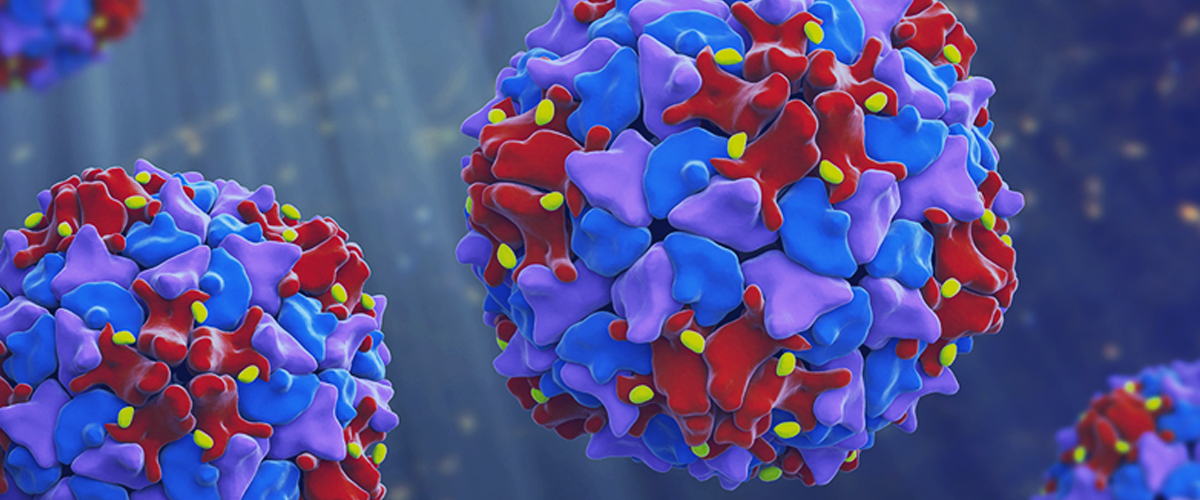What You Need to Know About Polio and How to Protect Yourself
Two infectious diseases experts explain why the recent case of the virus is a cause for concern, and how to prevent it from spreading further.


Polio — which was thought to have been eliminated in the United States — has been detected in wastewater in several counties in New York, prompting Governor Kathy Hochul to declare a state of emergency in an effort to raise awareness about the importance of vaccination.
A viral illness that can affect the nervous system and cause muscle weakness and paralysis, polio affected millions of children and adults in the early part of the last century until vaccines were introduced in 1955 and cases began to plummet. “In the U.S., the last cases of wild poliovirus that originated in this country (that is, were not brought into the country by travelers) occurred in 1979,” says Dr. Yoko Furuya, chief epidemiologist and medical director of Infection Prevention and Control for NewYork-Presbyterian Hospital.

Dr. Yoko Furuya
However, in July, health officials identified a case of paralytic polio in an unvaccinated individual in Rockland County. Furthermore, wastewater samples have led experts to believe that the virus may be spreading in the New York region, specifically through New York City, Orange, Sullivan, and Nassau counties.
“What is concerning about the recent events is that a case of poliomyelitis (polio that causes paralysis) is already a sign that there is likely ongoing transmission in the community,” says Dr. Karen Acker, a pediatric infectious diseases specialist at NewYork-Presbyterian Komansky Children’s Hospital. “The identification of polio from wastewater surveillance adds to that concern that there is ongoing transmission of polio.”
Dr. Furuya and Dr. Acker shared with Health Matters what people need to know about polio and how to protect themselves and their children from the disease.

Dr. Karen Acker
Why are we seeing polio now? Hadn’t it been eradicated?
Dr. Furuya: Polio has not been completely eradicated. Globally, two of the three strains of wild poliovirus (types 2 and 3) have been eradicated, and the remaining strain of wild poliovirus (type 1) is circulating in only two countries, Pakistan and Afghanistan.
All that being said, outbreaks of polio continue to occur, usually due to a strain of poliovirus that is given as part of the oral polio vaccine. Since 2000, the U.S has only been vaccinating people against polio using the inactivated polio vaccine (IPV), which is an injectable vaccine. However, in many other countries, the vaccine that is used is the oral polio vaccine (OPV) which contains live, weakened polioviruses. When people receive OPV, the live, weakened polioviruses can lead to transmission to other people. Normally this doesn’t cause problems if everyone else is vaccinated as well, but if there are enough unvaccinated or undervaccinated people around, and the weakened poliovirus from the vaccine circulates in that community for long enough, it can actually revert to a form that can cause paralytic disease.
Dr. Acker: Although we had considered polio eradicated in the Americas in 1994, polio continues to cause infections globally due to undervaccination. OPV is used globally in an effort to eradicate polio and is very effective at preventing polio infections. Yet, if there are enough undervaccinated individuals in the community, and the vaccine-derived virus circulates long enough, it can result in paralytic disease, as was seen in the recent case in New York in July which was a case of poliomyelitis caused by a vaccine-derived virus in an unvaccinated individual.
Can you explain what polio is and how it’s spread?
Dr. Furuya: Polio, or poliomyelitis, is a very contagious disease caused by a virus that lives in people’s gut, which can spread through contact with the stool of an infected person, as well as sometimes from droplets from an infected person sneezing or coughing. If you get the stool or droplets on your hands and then touch your mouth, you can get infected in what we call “fecal-oral” transmission.
More than 70% of people who get infected with the poliovirus actually have no symptoms but can still shed and spread the virus to others. About 1 in 4 infected people can get flu-like symptoms such as fever, sore throat, nausea, vomiting, or abdominal pain; these symptoms usually only last for a few days and then go away on their own. More rarely however, people can get more severe symptoms that affect the brain and spinal cord, specifically meningitis (inflammation of the fluid around the brain and spinal cord) and weakness and paralysis of the arms and/or legs (called acute flaccid paralysis).
If you were vaccinated as a child, are you still protected as an adult? What about kids who aren’t yet fully immunized? Who is at risk?
Dr. Furuya: It’s thought that getting the full vaccine series as a child should provide lifelong immunity from paralytic polio, although we can’t be 100% certain. Kids who aren’t yet fully immunized may be at some risk, although it’s been shown that 90% of people who received IPV are immune after two doses and 99% are immune after three doses, so most children who received their vaccine series on schedule should be protected, even before they receive their fourth dose at age 4 to 6 years.
Dr. Acker: Individuals who were fully vaccinated as a child are protected against paralysis from polio. Those considered at higher risk include healthcare providers treating patients who could have had polio or have close contact with a person who could be infected with poliovirus, laboratory workers handling specimens that may contain poliovirus, and travelers to areas where poliomyelitis is endemic or epidemic.
“The best way to protect yourself and your family from polio is to get vaccinated and ensure your children have been vaccinated.”— Dr. Yoko Furuya
If you aren’t sure if you were vaccinated, should you get vaccinated again?
Dr. Furuya: Adults who received their routine childhood vaccinations should have received the polio vaccine; it’s also required to enter public schools in the U.S. as well as many private schools, but if you have any reason to suspect that you may not have received all of your routine childhood vaccinations then you should get vaccinated.
Dr. Acker: If you are not sure if you have been vaccinated and cannot obtain documentation of your vaccination, it is recommended to get a three-dose series of the polio vaccine. Children less than 4 years old on the other hand, should receive a four-dose series of the polio vaccine. Some individuals who are fully vaccinated may be eligible for a booster dose. Currently, the CDC is recommending a single booster dose for lab and healthcare providers who handle specimens that might contain polioviruses and for healthcare providers who are treating patients who could have polio.
What is the best way to protect yourself? What tips would you suggest people follow to stay safe?
Dr. Furuya: The best way to protect yourself and your family from polio is to get vaccinated and ensure your children have been vaccinated. The IPV vaccine is extremely safe and effective; the viruses in IPV have been chemically killed so they cannot replicate, cause transmission, or cause disease.
Handwashing is also always a good way to protect yourself from bacteria and viruses around you, so washing hands after being in public places and before you eat is always a good idea. Alcohol-based hand sanitizers have lower efficacy against non-enveloped viruses like poliovirus, but washing hands with regular soap and water for at least 20 seconds is effective at removing the virus from your hands.
Dr. Acker: Children should be vaccinated according to the vaccine schedule (four-dose series at 2 months, 4 months, 6 months, and between 4 and 6 years) and vaccine doses should not be delayed. The most common side effects are pain at the site of injection (occurring in 3-18%). Severe side effects are extremely rare.
If you are fully vaccinated, you can feel reassured that you are safe against paralysis from polio. Also, hand hygiene, with soap and water, after using the bathroom and before eating is an important preventive measure against polio. Alcohol-based sanitizers may not be as effective against polio as soap and water. But if soap and water are not available, it is recommended to use an alcohol-based sanitizer with at least 60% alcohol.

